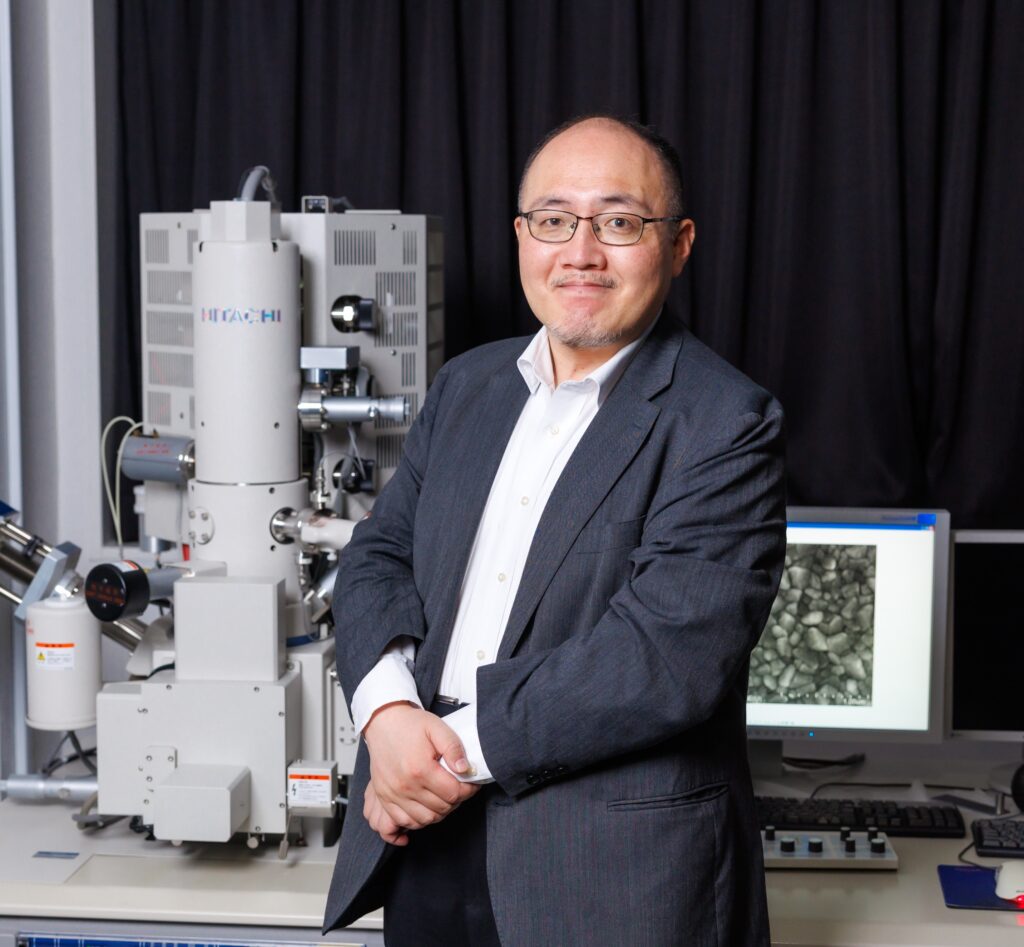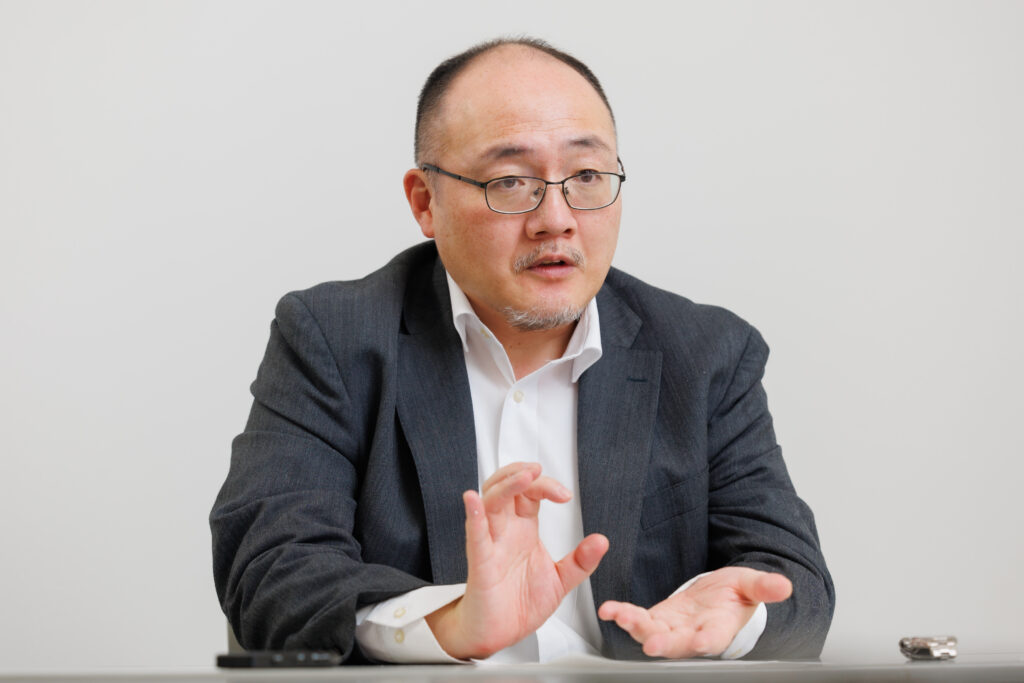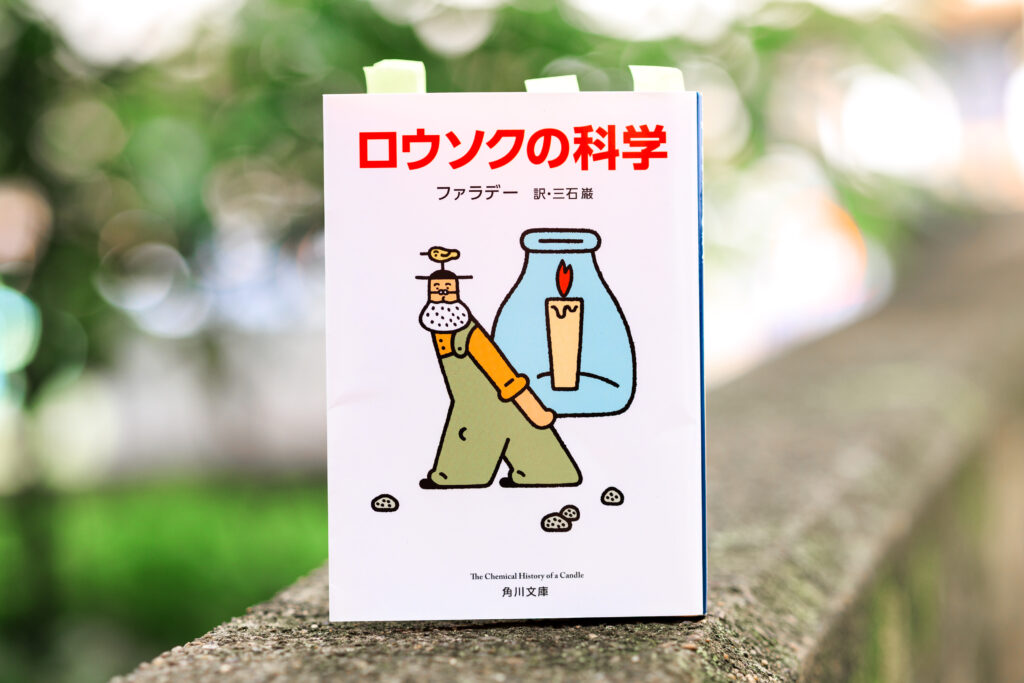
Professor Hiroshi Uchida of the Faculty of Science and Technology is an expert in applied chemistry. He is currently working to create crystals from metals and oxygen that can be used for materials for electronics parts. Here, he discusses the importance of non-toxic lead-free manufacturing, and the policies he adopts in his research.
My current area of research involves creating metal-oxide crystals—which are made from metal and oxygen—so that they can be used in materials for electronic parts. I am particularly interested in what are known as “piezoelectric materials.” For many years, piezoelectric materials have used metal oxides that include lead—one of the goals of my research is to create lead-free alternatives.
Piezoelectric materials generate electricity when they are deformed with mechanical force and, conversely, deform when electricity is applied. Due to these properties, piezoelectric materials are used in sensors that generate electrical signals when they sense vibrations—and so undergo deformation—and in speakers that vibrate the air by deforming when electricity is applied.
The most common piezoelectric materials are lead titanate and other lead-based metal oxides. Lead is used in various electronic parts because it is easy to obtain; but piezoelectric materials containing lead also exhibit outstanding performance—for this reason, they are widely used today as materials in high-performance sensors and speakers.
Lead-free piezoelectric materials

Lead is toxic to humans, affecting our brains and our nerves. As such, in recent years, research in various fields has focused on finding substances that can be used as substitutes for lead.
Even if electronics containing lead do not pose any problems during use, waste containing lead can leak from manufacturing plants; and if waste electronic parts are sent to landfills, then rainfall can cause lead to leach out, and filter underground with a negative impact on the environment.
Lead-free manufacturing is therefore a matter of global urgency. Although vigorous research is being undertaken by large numbers of experts, we have yet to find lead-free piezoelectric materials with the same performance as their lead-based counterparts.
Yet over the last few years, researchers have slowly been making progress. There are hopes that compounds based on potassium niobate or hafnium oxide might be used as substitutes for lead-based materials.
These new materials exhibit outstanding performance, but they faced a problem: during the crystal processing stage, the crystals become unstable. However, recent research has shown that the crystals can be stabilized by making adjustments to heating and cooling methods during the crystal creation process. They have since attracted global attention.
Changing methods of heating and cooling is an extremely widespread technique in manufacturing process of metal-oxide crystals, but it just so happened that no one had thought to apply it to these new materials. This is one of the things that makes chemistry so interesting—even when using the same materials, the use of slightly different techniques can lead to significantly different results.
The enduring excitement of experimenting and contributing to social good
It is important that research proceeds in an efficient manner. However, if I hit upon a good idea, my policy is to carry out experiments without fearing failure. Of course, failures are common; but if you investigate why you failed, and apply your learnings to future ideas and experiments, then there will be value in this failure.
I was a member of the science club at high school, and I loved the activities we did. In fact, this is why I became a researcher. Even today, I take great pleasure in carrying out experiments—and setbacks have never caused me to dislike experimenting.
I remember making blue crystals of copper sulfate in the school science room—my heart still jumps with a similar excitement when a substance I make turns into a crystal in a reaction chamber. I am delighted if my experiments bear my hypotheses out; but even if they throw up unexpected results, it fascinates me.
As a researcher, you can experience the simple joys of chemistry; and striving to ensure your research benefits society is exceedingly rewarding.
The book I recommend
“The Chemical History of a Candle”(Rosoku no Kagaku)
by Michael Faraday, Japanese translation by Iwao Mitsuishi, Kadokawa Bunko

Michael Faraday was a 19th-century English scientist. This book, which is a transcript of a series of lectures he gave for children, is a famous chemistry primer. When I read it, I can still recall my high school days when, as a member of the science club, I devoted myself to experiments every day.
-
Hiroshi Uchida
- Professor
Department of Materials and Life Sciences
Faculty of Science and Technology
- Professor
-
Graduated from the Department of Chemistry, Faculty of Science and Technology, Sophia University, and completed his Master’s degree in the Department of Applied Chemistry at the university’s Graduate School of Science and Technology. Received his Ph.D. in Engineering from the Department of Inorganic Materials, Tokyo Institute of Technology Graduate School of Science and Engineering. After working as an assistant professor at the Department of Chemistry, Faculty of Science and Technology, Sophia University, and then as an associate professor at the university’s Department of Materials and Life Sciences, Faculty of Science and Technology, was appointed to his current position in 2018.
- Department of Materials and Life Sciences
Interviewed: May 2023